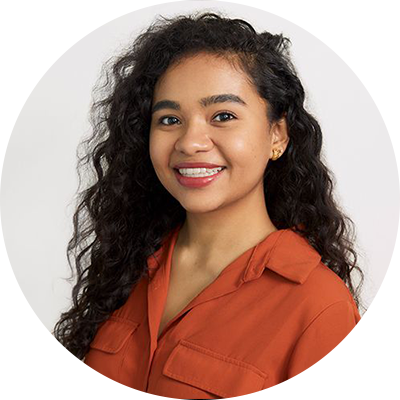Take post-secondary education, for example: At some point, you’ll need to consider opening a Registered Education Savings Plan (RESP) for your kids’ higher education.
But your income isn’t unlimited — only so much savings is possible in a given year — and you have other financial priorities to attend to, like your RRSP.
So, given that both RRSPs and RESPs grow your money tax-free, is there an advantage to choosing one over the other?
We’ve broken down the pros and cons to help make that decision a little easier.
Option 1: Prioritize your RRSP

It’s never too early to start hoarding funds for your golden years, whether you plan to retire at 55 or 70.
An RRSP allows you to make annual tax-protected deposits. The limit on contributions is 18% of your income for the previous year up to the maximum cap for the year, which came to $27,230 in 2020.
Pros
Aside from the obvious — you’re preparing for the future with enough savings to get you comfortably through your retirement without depending on your children — there are several other benefits to investing in an RRSP.
The main advantage is being able to deduct your contributions from your taxable income.
And whereas withdrawals prior to retirement are subject to income tax, there are some exceptions.
Under the Home Buyers' Plan (HBP), first-time homebuyers can use some of their RRSP money toward building or buying a home with a repayment period of 15 years.
And the Lifelong Learning Plan (LLP) lets enrolled students withdraw up to $10,000 from their RRSP each year toward education costs. That program has a 10-year payback period.
Cons
As mentioned, you can dip into your nest egg before you retire, but, save for the above-listed exceptions, you’ll get taxed pretty heavily for doing so: 10% when you withdraw up to $5,000, 20% for a maximum of $15,000 and 30% on amounts over $15,000 (in every province except Quebec).
And that’s not all. You end up losing that contribution room as well — that is, you can’t re-contribute the amount you withdrew, since it still counts toward your limit.
Another small drawback to an RRSP is that you can only contribute to it until you turn 71. At that point, you’ll have to either withdraw a lump sum, purchase an annuity or convert your RRSP into a Registered Retirement Income Fund (RRIF) for fixed withdrawals.
Empower Your Investments with Q Trade
Discover Q Trade's award-winning platform and take control of your financial future. With user-friendly tools, expert insights, and low fees, investing has never been easier.
Start Trading TodayOption 2: Prioritize your RESP

Tuition fees are getting increasingly expensive, so you might think that saving your kids from student debt is more important than your own retirement savings.
An RESP can help take off some of the load, or even give your kids a full ride.
There aren’t any annual contribution limits, so you can deposit whatever you want into the account each year, but there’s a lifetime contribution limit of $50,000.
Pros
Your RESP balance grows until your kid’s off to campus and you start making withdrawals for school expenses. But it’s the beneficiary (also known as your child), who will have to deal with taxes once the money’s being used.
That said, since students usually don’t have much income, they’ll probably fork over very little or nothing at all to the government anyway.
You also score free money from the government through programs like the Canada Education Savings Grant (CESG), which matches 20% of your annual RESP contributions for a maximum of $500 a year. Low-income households can be awarded with up to $2,000.
And if your child decides to forgo higher education, you can still keep the account open (for up to 36 years after it was first opened) in case they change their mind later.
If they don’t, you can transfer the funds tax-free into a sibling’s account or roll them into your RRSP.
Cons
Keep in mind that RESP contributions are not tax-deductible.
And if you decide to withdraw money for any non-education purposes, not only will it get taxed as income, there’s an additional 20% penalty as well.
If your child decides not to attend university and you close the account, you’ll lose out on those government grants and any investment earnings — although you might be able to keep your investment earnings if the account’s been open for at least 10 years and your child is 21 or older.
Which one should you choose?

Both tax-advantaged accounts have their benefits and drawbacks, but most money experts recommend prioritizing your RRSP first because It’s important that you’re financially secure in your retirement before you start tucking away funds for your kids’ futures.
“If you, the parent, are not on track, you need to prioritize your retirement planning above RESPs for your kids,” says Lesley-Anne Scorgie, founder of money school MeVest. “It’s like you’re on an airplane: The oxygen masks drop and an announcement comes on to say put your own mask on first before you help another person.”
Once you’ve decided which investment vehicle(s) you’d like to contribute to, you can boost your income so you’re able to set more money aside for the future. Here are some helpful options:
-
Capitalize on doing the things you love. Monetize your secret talents and hobbies and set up your side hustle. You can create an account on an online marketplace for gig workers and advertise your skills for hire in your spare time.
-
Grow your spare cash. Even if you’re new to the stock market, you can invest on autopilot with an app that does all the hard work for you by building you a portfolio and automatically rebalancing based on changes in the market.
-
Review your insurance rates. You don’t need to stick to one rate for the rest of your life. Do some comparison shopping and find a better rate on your life insurance. Check whether you can save on mortgage protection as well.
-
Find savings where you can. Take a good, hard look at your recurring bills. Get a library card and order books and movies to watch for free instead of paying for them and cancel any unused service subscriptions. You can also download a cashback rewards app to earn money as you shop for everyday items online and in-store.
Sponsored
Trade Smarter, Today
With CIBC Investor's Edge, kick-start your portfolio with 100 free trades and up to $4,500 cash back.








